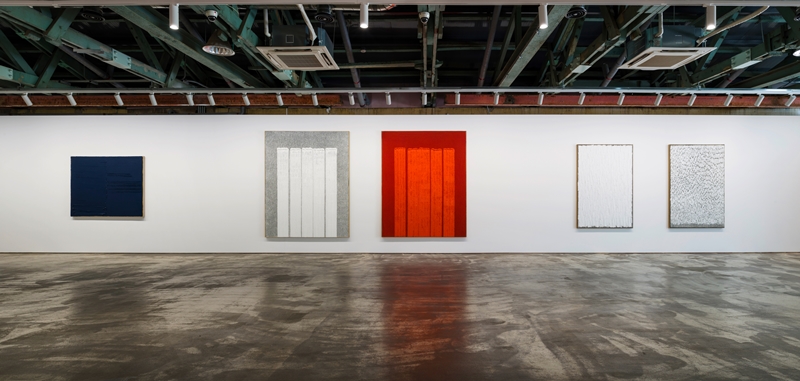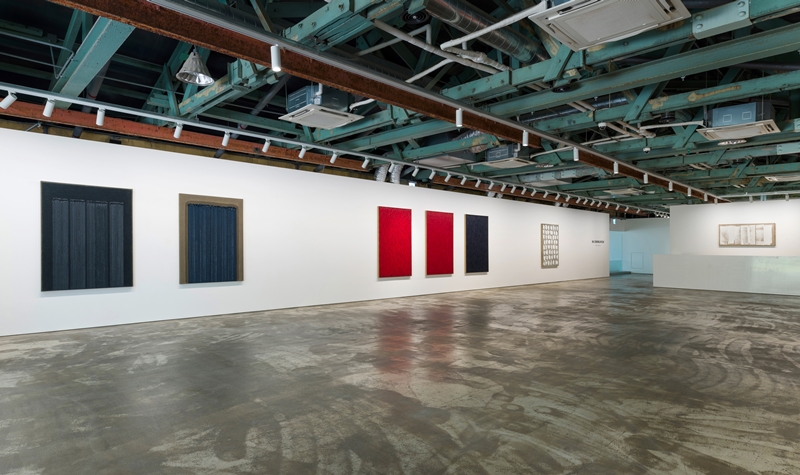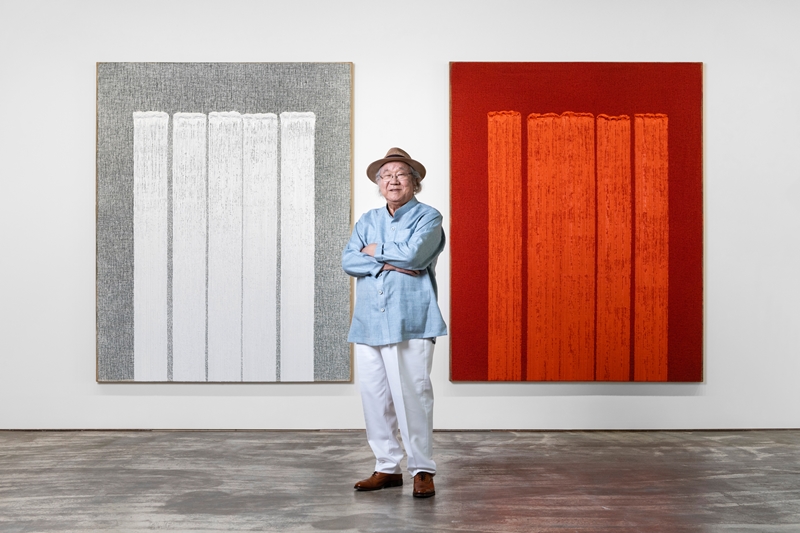ART & CULTURE
Past
Past events at F1963
 Exhibition
Exhibition《Ha Chong-Hyun》Past
- Dates2019.05.29 ~ 2019.08.04
- PlaceKukje Gallery Busan
- Time10:00 - 18:00 (Every Monday Closed)
- OrganizerKukje Gallery
- Ticket priceFree Admission
- Contact info+82-51-758-2239
- Website Go >
- Overview
- Gallery

“I borrowed the element of fire to compress the depth of time.”
– Ha Chong-Hyun -
Kukje Gallery is pleased to present Ha Chong-Hyun, on view from May 29 to August 4, 2019, at the gallery’s Busan space. Comprised of over ten recent works, Ha Chong-Hyun marks the artist’s first solo exhibition in Korea in nearly four years, and his first in Busan. Ha has a long relationship with the Yeongnam region in which Busan and Daegu are located, having been in the group exhibition Renegades in Resistance and Challenge at Daegu Art Museum (2018) and the Busan Biennale (2016, 2008). Best known for his experimentation with paint and commitment to asking, “what is painting?” Ha’s exhibition in Busan focuses on works from his celebrated Conjunction series, with special emphasis on his expanding exploration of color as well as his innovative use of smoke and fire to transform the surface of his paintings.
This commitment to experimentation is a continuation of the work he showed at Kukje Gallery’s Seoul branch in 2015. In that show, Ha introduced a series of Conjunction paintings that utilized a “smoking” technique invented by the artist where thick, sooty smoke is applied to wet paint, leaving exquisite and unpredictable colors. A gasoline-soaked torch is held near the wet painting, allowing the heavy char smoke to naturally saturate the painted surface. This technique was the result of Ha’s desire to replicate colors of nature that cannot be artificially made, revealing the artist’s embracement of chance in his practice. In addition, Ha began utilizing subtle colors reminiscent of traditional Korean roof tiles or giwa, as well as tones evoking brick, soil, and silvergrass. Ha Chong-Hyun will be the artist’s first exhibition in Korea to include large Conjunction paintings made with a new palette including red, blue, and vermillion (a combination of red and orange known as dahongsaek). One recent example of this interest in the symbolic role of color is Conjunction 18-41 (2018) where the artist plays with the subtle correspondence of broad black strokes on the natural hemp to convey not only the somber and rich black palette, but the organic color of a giwa roof that has weathered over time.
Ha’s interest in color is rooted in the artist’s longstanding practice of careful observation of the landscape and appropriating everyday materials—reframing them as formal language—an investigation that goes back to his earliest works. From 1962 to 1968, Ha devoted himself to making abstract oil paintings in the style of the improvisational abstract art movement known as Art Informel. From 1969, following the founding of the Korean Avant Garde Association, through the mid-1970s, Ha went through a period of expansive “material exploration" centered on objects such as plaster, newspaper, wood, rope, and wooden boxes. During this time, Ha Chong-Hyun sought out non-artistic and non-traditional media such as flour, newspaper, steel springs, and barbed wire, and began utilizing both sides of the canvas made of rough burlap sacks that carried USAID rations following the Korean War. Exploiting the unique ground material, Ha established an innovative method where he applies thick oil paint to the back of and pushes it to the front of the surface through the coarse weave, a process known as bae-ap-bub. This became the basis of his signature Conjunction series. The thick striated paint that oozes to the front is then freely transformed by the artist using tools such as knives, brushes, and wooden spatulas which Ha appropriately modifies in order to create the patterns that accentuate the pictorial plane. It is this process that results in the piece becoming a “conjunction” between material and performance. This unconventional methodology illustrates Ha’s defiant attitude towards preexisting hierarchies and modes of painting.
For his exhibition in Busan, Ha’s use of red, blue, and vermillion shows the artist’s commitment to exploring colors seen in mundane surroundings in Korea. In particular, the vermillion color is new, having become part of Ha’s practice only last year. The vivid, red-orange color seen in Conjunction 18-12 (2018) was inspired by the colorful patterns known as dancheong that are used to decorate wooden structures and traditional Korean musical instruments. This will be the first time Ha is showing a painting using this color in Korea.
In another example of Ha’s ongoing commitment to experimentation, Conjunction 18-52 (2018) shows the artist using a combination of “smoking” a white oil ground and then using a thin wire, with which he gently scrapes the blackened surface exposing the white paint underneath. He then uses the wire to create a kind of calligraphic scratching across the composition, as a method that is reminiscent of Ha’s experimental period in the early 1970s during which he used barbed wire and nails.
Though he is in his mid-eighties, Ha Chong-Hyun continues to create powerful paintings with surfaces infused with materiality and energy. His vitality comes from experimentation and attests to the fact that Ha is still exploring new compositions to expand the boundaries of painting. Ha’s practice will be the subject of a number of shows, including his solo exhibition scheduled for September at Cardi Gallery in Milan. Furthermore, opening on June 21, Ha will participate in Landlord Colors: On Art, Economy, and Materiality, a group exhibition at the Cranbrook Art Museum in Michigan, displaying his 1972 barbed wire work and Conjunction paintings from the first half of 1979 alongside artists including Lucio Fontana, Jannis Kounellis, and South Korea's Park Seo-Bo, Kwon Young-Woo, and Yun Hyong-Keun. In July, he will participate with the Korean artist Kim Tschang-Yeul in Abstraction, a group exhibition at Song Art Museum in Beijing, showcasing a series of large-scale red, blue, and white Conjunction paintings. In February 2020, Ha will hold a solo exhibition at Almine Rech Gallery in London.
About the Artist
Born in 1935 in Sancheong, Ha Chong-Hyun graduated from Hongik University in 1959 and served as the Dean of the Fine Arts College at Hongik University from 1990 to 1994. He was the Director of the Seoul Museum of Art from 2001 to 2006. Ha has been the focus of major retrospectives at the National Museum of Modern and Contemporary Art, Korea, Gwacheon (2012); Gyeongnam Museum of Art, Changwon (2004); Fondazione Mudima, Milan (2003); and has recently held solo exhibitions in New York, London, Tokyo, and Paris. Ha has been acknowledged as a founding representative of Dansaekhwa, participating in group exhibitions including Korean Abstract Art: Kim Whanki and Dansaekhwa (2018) at the Powerlong Museum in Shanghai; When Process becomes Form: Dansaekhwa and Korean Abstraction (2016) at Villa Empain – Boghossian Foundation, Brussels; Dansaekhwa (2015), an official Collateral Event in the 56th Venice Biennale; and Dansaekhwa: Korean Monochrome Painting (2012) at the National Museum of Modern and Contemporary Art, Korea, Seoul. His works are housed in the collections of prominent institutions around the world, including the Museum of Modern Art and Solomon R. Guggenheim Museum, New York; the Art Institute of Chicago; the National Museum of Modern and Contemporary Art, Korea; Leeum, Samsung Museum of Art, Seoul; M+, Hong Kong; Tokyo Metropolitan Art Museum; Museum Voorlinden, Wassenaar; and OCT Boxes Art Museum, Guangzhou, among others.

[Kukje Gallery Busan] Ha Chong-Hyun_installation view
© Kukje Gallery

[Kukje Gallery Busan] Ha Chong-Hyun_installation view
© Kukje Gallery

[Kukje Gallery Busan] Ha Chong-Hyun_installation view
© Kukje Gallery

[Kukje Gallery Busan] Ha Chong-Hyun_artist profile
Photo by Ahn, CheonHo
© Kukje Gallery


